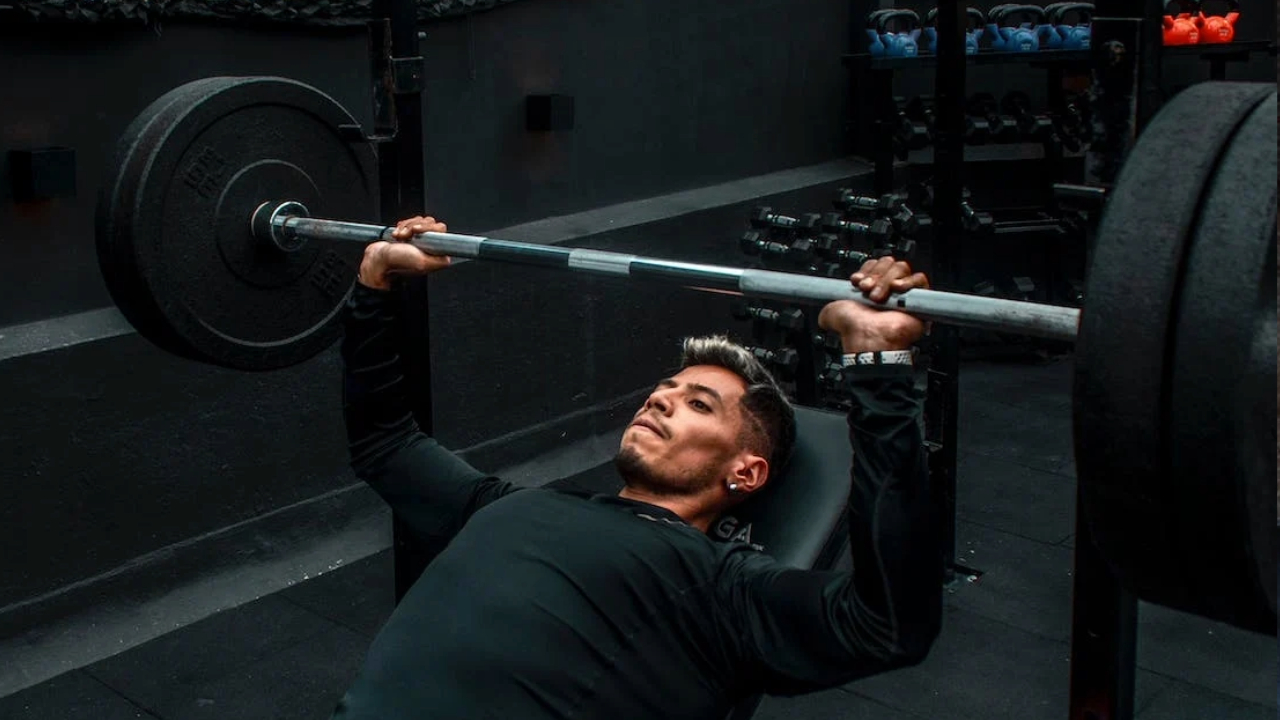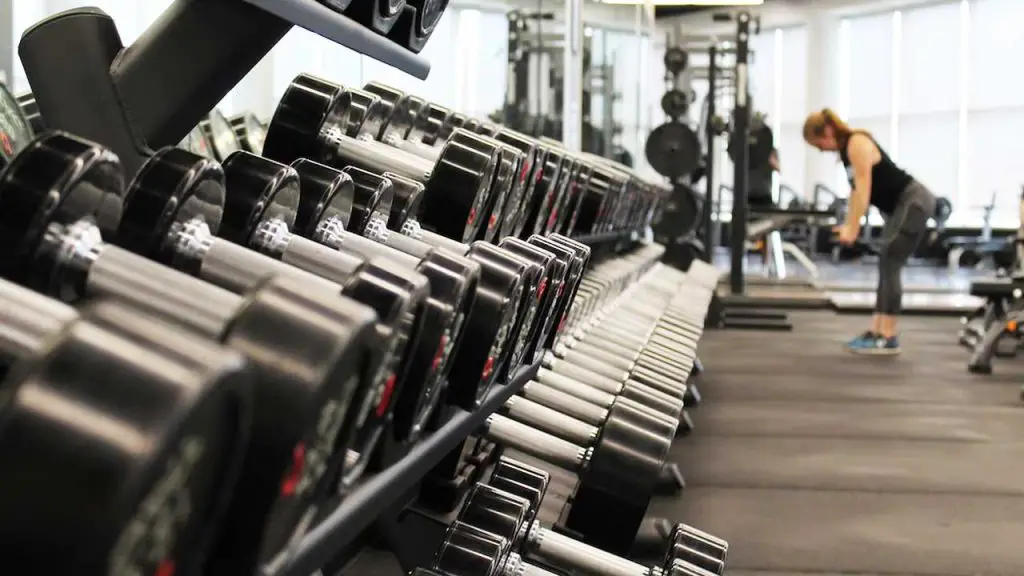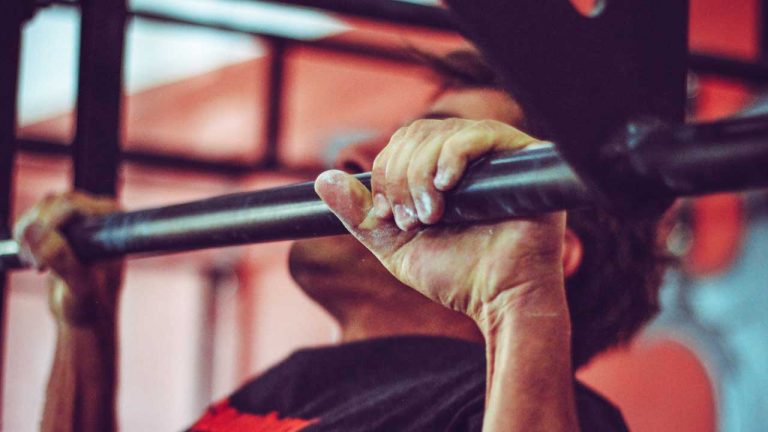Do You Have to Lift Heavy to Get Big? Debunking the Myth

ListedFit is reader-supported. When you buy through links on our site, we may earn a small commission.
Many people wonder if lifting heavy weights is the only way to achieve a muscular physique. It’s a common belief that you must lift heavy weights to pack on muscle mass and get bigger, but is this really the case?
Summary
The science behind muscle growth offers some clarity on this topic, indicating that it may not be as simple as just lifting heavy to get big.
In fact, several factors come into play when trying to build muscle, such as the balance between repetitions and sets, focusing on different muscle groups, and overall training consistency.
Key Takeaways
- Muscle growth can be achieved with various training methods, not just lifting heavy weights
- A balanced approach to reps, sets, and muscle group focus can lead to impressive gains
- Consistency and expert advice are critical components of successful muscle-building training
In This Article…
Fundamentals of Muscle Growth

When it comes to muscle growth, it’s essential to understand the basics. Your muscles are made up of muscle fibres, which can be divided into two types: Type I and Type II muscle fibres. Each type plays a different role in muscle function and growth.
Type I muscle fibres, also known as slow-twitch fibres, are responsible for endurance activities. They don’t tire easily, but they also don’t grow as quickly in response to resistance training. Type II muscle fibres, or fast-twitch fibres, are responsible for power and strength movements. They tire more quickly but have a higher potential for muscle growth.
Muscle hypertrophy, the process of increasing muscle mass, occurs when the muscle fibres get larger in response to resistance training. There are two types of muscle hypertrophy to consider: myofibrillar hypertrophy and sarcoplasmic hypertrophy.
Myofibrillar Hypertrophy involves the growth of muscle contractile parts. This type of growth is triggered by lifting heavier weights and performing fewer repetitions. As a result, you’ll see increased strength and denser muscles.
Sarcoplasmic Hypertrophy is the result of increased muscle glycogen storage within the muscle cells. This type of growth occurs when you lift lighter weights with higher repetitions, leading to increased muscle size without significant strength gains.
So, do you have to lift heavy to get big? The answer varies based on your specific goals. If you want to increase pure muscle mass, focusing on both myofibrillar and sarcoplasmic hypertrophy with a combination of heavy and lighter weights can be effective. However, if your goal is to build strength and denser muscles, prioritising heavier weights with lower repetitions to target myofibrillar hypertrophy could be the way to go. Remember to listen to your body and adjust your workout routine accordingly. Happy lifting!
Light Vs Heavy Weights?

When you’re looking to build muscle and size, it’s natural to wonder if you need to lift heavy weights. The truth is, there’s no one-size-fits-all answer, as different people respond differently to various training methods. In this section, we’ll explore the effects of lifting light, moderate, and heavy weights on muscle growth.
With heavy weights, you’re typically lifting weight that allows you to perform 1-6 repetitions before reaching failure. This type of training places a significant amount of stress on the muscles, forcing them to grow and adapt. It’s excellent for increasing overall strength, but keep in mind that it can be more demanding on your joints and ligaments.
On the other hand, light weights involve lifting a weight you can handle for 15-20 repetitions or more. Contrary to popular belief, lifting lighter weights can also promote muscle growth. The key here is to focus on high-rep sets and exercising your muscles to fatigue.
While you may not see the same explosive strength gains as with heavy weights, it’s a more joint-friendly option and offers other fitness benefits.
Moderate weights offer a middle ground, allowing you to perform 8-12 repetitions before reaching muscle failure. This balance between heavy and light lifting provides a combination of strength and endurance gains. Often, moderate weights can be an excellent option for those who want to build muscle without putting too much strain on their joints.
When lifting heavy, it’s crucial to focus on proper form and technique to prevent injuries. Since you’ll be pushing your body to its limits, make sure you allow ample time for rest and recovery. Additionally, it’s advisable to switch up your training routine and incorporate light or moderate weights to avoid hitting a plateau and keeping your muscles engaged.
In conclusion, you don’t have to solely rely on heavy weights to achieve muscle growth. Incorporating a mix of heavy, moderate, and lighter weights in your lifting routine can yield excellent results. Remember, consistency, proper form, and a balanced approach to training are what ultimately leads to progress.
The Importance of Reps and Sets

When it comes to getting bigger muscles, it’s essential to understand the significance of reps and sets in your workout routine. Let’s look at how these factors can affect your muscle growth.
Firstly, you need to determine your rep ranges. These are the number of repetitions you perform in each set. Generally, lower rep ranges (1-5 reps) with heavier weights focus on building strength, whereas higher rep ranges (12+ reps) with lighter weights concentrate on muscular endurance. In the middle, you have moderate rep ranges (8-12 reps), which are typically most effective for hypertrophy or muscle growth.
Next, consider the number of sets. A set is a group of repetitions performed successively without a break. The more sets you perform of a particular exercise, the higher the volume, which is crucial for muscle growth. To achieve optimal results, you’ll want to balance the number of sets with corresponding rep ranges.
For building muscle, the sweet spot tends to be around 3-5 sets of 8-12 reps per exercise. This combination allows you to lift moderately heavy weights, causing enough stress on your muscles to stimulate growth while also providing enough volume.
It’s essential to tailor both reps and sets to your goals. If you’re focused on building muscle and getting big, you might want to put more emphasis on moderate rep ranges and volume. But, keep in mind that a well-rounded fitness plan should include some heavy, low-rep training for strength and lighter, high-rep work for endurance.
Remember, it’s important to keep a casual mindset while optimising your workout routine. You can experiment with rep ranges and set volumes to find the perfect combination that works best for your unique body and individual goals. Enjoy your workouts and watch your muscles grow!
Does Size Equal Strength?
When you’re trying to gain muscle and build strength, you might wonder if muscle size directly correlates with strength. While there is a connection between muscle size and strength, it’s not as straightforward as you might think.
Firstly, building muscle mass and increasing your strength are not independent of each other – when you get stronger, you typically gain muscle. However, just because you have bigger muscles doesn’t necessarily mean you’ll have maximum strength. Numerous factors can affect your strength, such as muscle fibre makeup, muscle moment arms and body proportions.
Moreover, muscle-building and strength gains have different requirements. For example, hypertrophy training (building muscle mass) typically involves doing more total training volume – which means more sets and reps in your workout. On the other hand, strength training often involves lower rep ranges and heavier loads.
It’s essential to remember that everyone’s physique is unique. What works for someone else may not work the same way for you. So, when it comes to building muscle and gaining strength, individual progress is key. Don’t get too caught up in comparing your muscle size with others’ strength capabilities.
To sum it up, there is a relationship between muscle size and strength, but it’s not an absolute correlation. As you gain muscle, you’ll likely see an increase in strength to some degree. However, other variables play a role in determining your maximum strength potential. So, focus on your progress and tailor your workout routine to balance both muscle-building and strength training effectively.
Focus on Different Muscle Groups

When you’re looking to get big, it’s essential to work on different muscle groups, rather than just focusing on a few specific areas. Working on various muscles will not only help you achieve a balanced physique but also improve your overall strength and prevent potential injuries.
Begin by breaking down your workouts into focused training sessions on different muscle groups, such as abs, legs, quads, back day, chest day, and core. By doing this, you can target specific muscles in each workout which leads to optimal growth and development. In addition, incorporating compound exercises like deadlifts, squats, and bench presses can further boost muscle gains.
For example, on leg day, you could work on your quads, hamstrings, and calves with exercises such as squats and lunges. On a back day, focus on exercises that target the muscles in your back, like bent-over rows and pull-ups.
Similarly on chest day, incorporate moves that work on your chest, like bench presses and push-ups. Don’t forget to train your abs and core, as these muscles are vital for stability and strength in almost every move you make.
You don’t have to lift extremely heavy weights to get big; the key lies in progressively overloading your muscles. Aim for a range of 6 to 12 reps per exercise with a weight that challenges your muscles without compromising form. Gradually increase the weight as you become stronger, ensuring that the last few reps in each set are challenging.
Don’t overtrain any muscle group, as this could lead to imbalance and injury. Allow adequate recovery time between workouts targeting the same muscles, usually around 48-72 hours, ensuring that your muscles have enough time to repair and grow.
Expert Tips and Advice
When striving to get big, many would suggest that lifting heavy weights is essential. However, the key lies in finding the right balance and approach to your workouts. Here are some expert tips and advice to guide you on your journey:
- Consult a personal trainer or coach. To ensure you’re following the best approach for your specific goals and body type, consider seeking advice from qualified professionals, such as personal trainers or coaches. They can help you create a tailored programme and provide you with proper techniques to prevent injuries and guarantee results.
- Men’s health and renowned bodybuilders’ insights. Look for authoritative sources on muscle building, like Men’s Health magazine, or learn from legends such as Arnold Schwarzenegger and Ronnie Coleman. Their experiences and strategies can offer valuable advice on how to approach lifting for optimal muscle growth.
- Follow the American College of Sports Medicine (ACSM) guidelines. This credible organisation suggests lifting weights at 60% to 80% of your one-repetition maximum (1RM) for 8 to 12 reps per set, with 1 to 3 sets per exercise. This approach can help you target muscle hypertrophy, the process responsible for increasing muscle size, without necessarily having to lift “heavy” weights.
- Progressive overload is crucial. Gradually increasing your workout intensity, volume, or frequency can help you keep making progress in your muscle-building journey. This approach promotes muscle growth without constantly pushing you to lift heavy weights, which might not be suitable for everyone.
- Don’t forget about rest and recovery. Giving your muscles time to recover is vital to ensure growth. Proper nutrition, sleep, and even incorporating active recovery techniques like yoga or stretching can help you get the most out of your workouts.
So, while lifting heavy weights can provide an excellent foundation for building muscle, it’s not the only factor to consider. By following expert advice and guidance, you can create a well-rounded and effective approach to your weightlifting journey.
Frequently Asked Questions
How heavy should I lift for muscle gain?
To gain muscle mass, it’s recommended that you lift weights that are 70-85% of your one-rep max if you’re a novice trainee, and up to 100% if you’re a veteran lifter.
Aim for 8-10 reps per set to stimulate hypertrophy and muscle growth.
Remember to listen to your body and adjust the weight accordingly.
Is lifting heavy weights always necessary?
No, lifting heavy weights isn’t always necessary to build muscle. It’s essential to focus on proper form, progressive overload, and a well-rounded training program.
You can also incorporate lighter weights with higher reps to build strength and muscle endurance. The key is to challenge your muscles consistently to see growth.
Can muscle be built without weights?
Yes, you can build muscle without weights through bodyweight exercises like push-ups, pull-ups, and squats.
These exercises use your bodyweight as resistance and can be modified to increase difficulty as you progress.
Incorporating a balanced mix of compound and isolation bodyweight movements can help stimulate muscle growth effectively.
Will heavy lifting increase arm size?
Heavy lifting can increase arm size if it’s combined with a diverse and targeted workout regimen focused on the arms.
Exercises such as bicep curls, tricep dips, and variations of rows can build arm muscles effectively.
But remember, it’s crucial to train other muscle groups as well for overall balance and symmetry.
Is it possible to gain muscle with the same weight?
It’s possible to gain muscle with the same weight by focusing on technique, increasing the number of reps, sets, or decreasing rest periods between sets.
This approach challenges your muscles and promotes growth.
Although this method can be effective, it’s essential to introduce progressive overload eventually to continue making gains.
Should natural bodybuilders lift heavy?
Natural bodybuilders can benefit from lifting heavy weights to stimulate muscle growth and improve overall strength.
As a natural bodybuilder, you should prioritize progressive overload, proper nutrition, and adequate rest to maximize your muscle-building potential.
However, lifting heavy weights doesn’t necessarily mean you need to max out every time; just ensure your workouts remain challenging and effective.
Author
- Danny Loeb is a qualified Personal Trainer, Fitness Model and Writer. He enjoys blogging about health and fitness, messing around with Photoshop, and sharing his experiences with everyone.
Latest entries
 NutritionFebruary 6, 2024What Are Fillers in Supplements? – Unveiling Inactive Ingredients
NutritionFebruary 6, 2024What Are Fillers in Supplements? – Unveiling Inactive Ingredients FitnessAugust 23, 2023Best Post-Workout Foods: Great Ideas for Recovery and Results
FitnessAugust 23, 2023Best Post-Workout Foods: Great Ideas for Recovery and Results BulkingJuly 26, 2023Is Rice Good for Bulking? Unveiling the Truth
BulkingJuly 26, 2023Is Rice Good for Bulking? Unveiling the Truth CultureJuly 15, 2023Why Do People Hate Planet Fitness? Read This Before You Join!
CultureJuly 15, 2023Why Do People Hate Planet Fitness? Read This Before You Join!
Affiliates:
This post may contain affiliate links that at no additional cost to you, the site may earn a small commission. We only recommend products we would use ourselves and all opinions expressed on this site are our own.
General Advice:
The information provided in this article is for general informational purposes only. It is not intended as a substitute for professional advice. Always consult with a qualified healthcare professional before starting any new diet, exercise program, or making changes to your health routine.
Accuracy Advice:
While we strive to provide up-to-date and accurate information, the content in this article may not reflect the most current research or medical guidelines. We encourage readers to do further research and consult with professionals for more personalized advice.
Our Recommendations:
The products and services mentioned in any of our articles are recommended based on our independent research and personal experience. We are not sponsored by any company. We aim to suggest products and services we believe are of high quality and could be beneficial to our readers.






